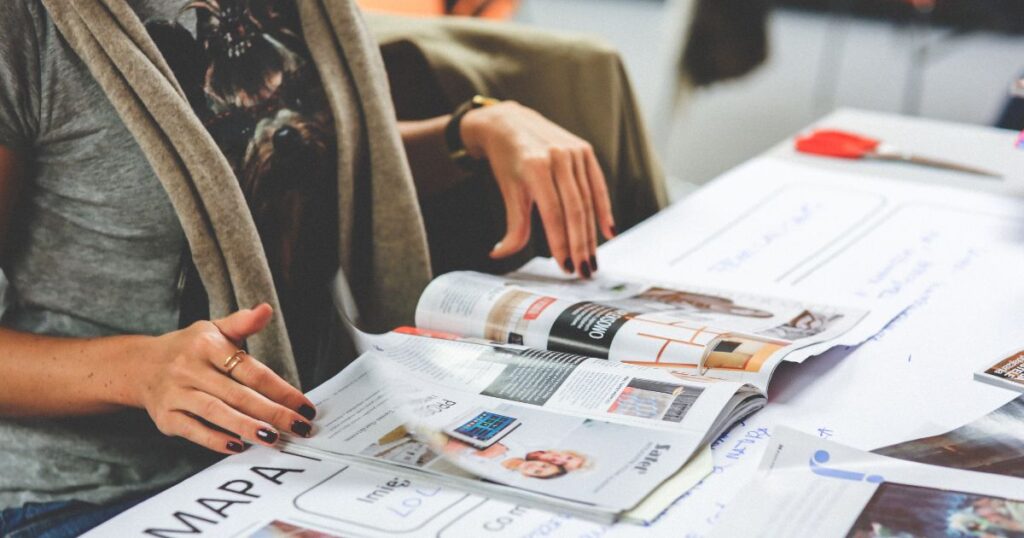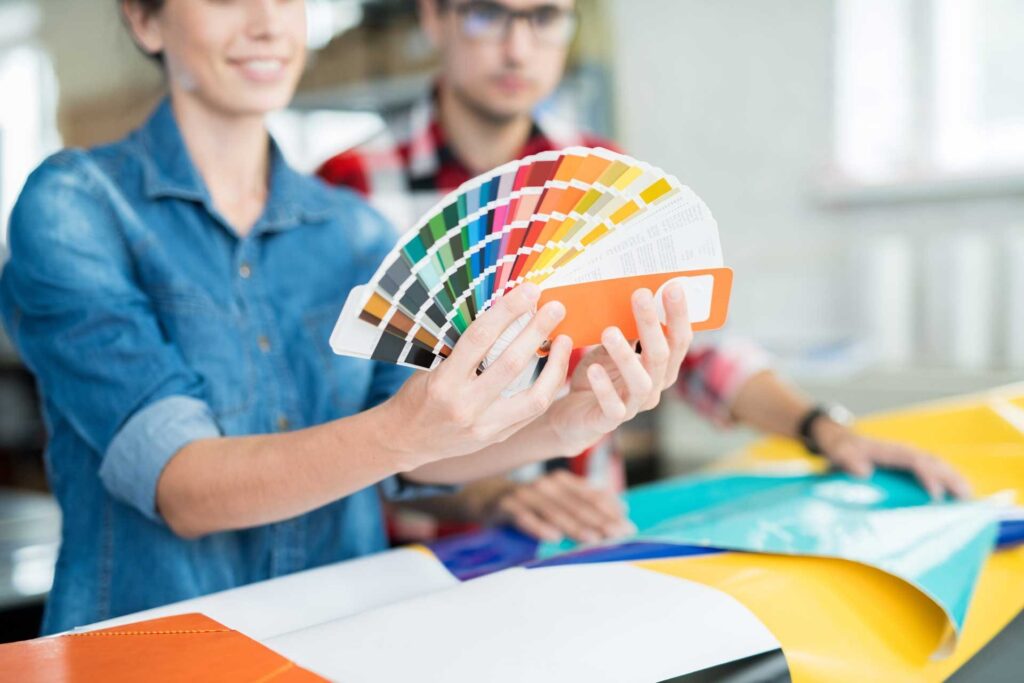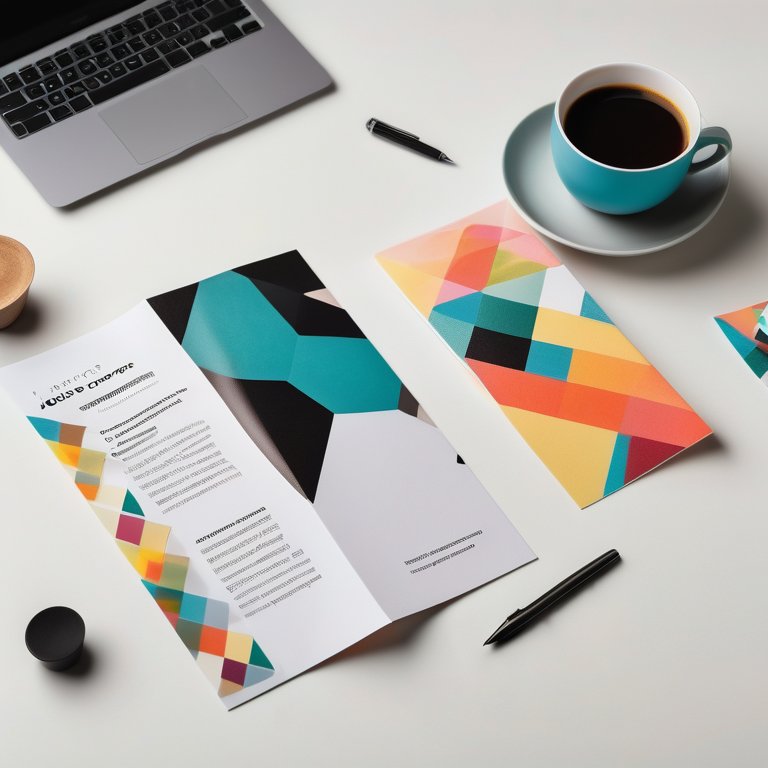Everything You Need to Know About Print Design
Print design is not going anywhere anytime soon. In fact, with the rise of AI, some people are now favouring these more traditional methods, especially for marketing materials.
From menus at a local restaurant, books and magazines, to flyers through your front door, these are all examples of print design.
So, what is print design?
In this guide, we cover:
- What print design is
- Why is print design important?
- Examples of print design
- Key aspects of print design
- The print design process
Let’s dive in.

At Image Box Design, we offer print design and marketing collateral for any design projects you may have. From advertising design and brochures to logo design and branding, we can help. Get in touch or take a look at our graphic design portfolio.
What is Print Design?
Print design is a specialised area within graphic design focused on creating visual content for printed media. This encompasses a variety of products such as brochures, magazines, newspapers, business cards, posters, flyers, packaging, and more.
The main objective of print design is to convey a message or information effectively through visual elements and text, specifically tailored for physical reproduction.
Why is Print Design Important?
You might wonder, why invest in print nowadays? The purposes of print design are varied, yet they all revolve around effective communication and engagement.
- Brand Identity – Print design is crucial in establishing and maintaining a brand’s identity through consistent use of colours, fonts, and imagery.
- Marketing and Communication – Effective print design can grab attention, convey messages clearly, and drive engagement and action.
- Professionalism – High-quality print materials reflect professionalism and attention to detail, enhancing the credibility of a business or organisation.
Applications and Examples of Print Design
Print design is everywhere, often in items we interact with daily.
- Marketing Materials – Brochures, flyers, posters, and advertisements.
- Corporate Identity – Business cards, letterheads, and envelopes.
- Publishing – Books, magazines, and newspapers.
- Packaging – Product packaging and labels.
- Signage – Banners, billboards, and trade show displays.
- Everyday Items – Menus in restaurants, calendars on our walls or desks, and personal touches like invitations for weddings or simple greeting cards that convey heartfelt messages.

Key Aspects of Print Design
Creating effective print designs involves several key aspects:
- Layout and Composition
- Typography
- Font Selection – Choosing appropriate fonts that match the tone and purpose of the design.
- Readability – Ensuring text is legible and easy to read.
- Typography Styles – Using different styles (bold, italic, etc.) to emphasise important information.
- Colour Theory
- Colour Schemes – Selecting colour palettes that evoke the desired emotions and fit the brand or message.
- Colour Modes – Understanding the difference between RGB (for digital) and CMYK (for print) colour modes.
- Contrast – Using contrast to make elements stand out and improve readability.
- Imagery and Graphics
- High-Resolution Images – Using high-quality images to ensure clarity and sharpness in print.
- Vector Graphics – Utilising vector graphics for logos and illustrations to maintain scalability and quality.
- Image Editing – Enhancing and editing images to fit the design and message.
- Print-Specific Considerations
- Bleed and Margins – Setting up bleed areas and margins to ensure the design extends to the edge of the printed piece without being cut off.
- Paper and Finishing – Choosing the right paper type, weight, and finishing options (e.g., matte, glossy, embossing) to enhance the final product.
- Proofing – Reviewing and approving proofs to ensure the design looks as intended before mass production.
- Software and Tools
- Design Software – Using industry-standard software like Adobe InDesign, Illustrator, and Photoshop for creating and editing designs.
- Prepress Software – Utilising prepress tools to prepare files for printing, ensuring they meet the printer’s specifications.

What is the Process of Print Design?
The print design process includes several key stages to ensure the final product is both visually appealing and effective in communicating the intended message.
Here’s a breakdown of the process:
1. Concept Development
This initial phase involves understanding the project requirements and objectives. It includes gathering information about the target audience, the message to be conveyed, and any specific preferences or constraints. Brainstorming sessions and research are conducted to generate ideas and concepts that align with the project goals.
2. Design and Layout
Once the concept is finalised, the design phase begins. This involves creating visual elements such as graphics, typography, and colour schemes. Designers use software tools to develop layouts that effectively organise these elements. The layout must consider factors like readability, visual hierarchy, and overall aesthetic appeal.
3. Review and Feedback
After the initial design is completed, it is presented for review. Feedback is collected to identify any necessary revisions or adjustments. This collaborative process ensures that the design meets the expectations and requirements of all parties involved.
4. Revisions and Refinements
Based on the feedback received, the design undergoes revisions. This may involve tweaking the layout, adjusting colours, or modifying graphics. The goal is to refine the design to better align with the project objectives and stakeholder preferences.
5. Prepress Preparation
Once the design is approved, it moves to the prepress stage. This involves preparing the files for printing, which includes tasks like colour correction, image resolution adjustment, and ensuring proper file formats. Proofs are generated to verify that the design will print as intended.
6. Printing
The finalised design is sent to the printer. The printing process involves selecting the appropriate paper stock, ink, and printing technique to achieve the desired quality and finish. Quality control measures are implemented to ensure the printed materials meet the specified standards.
7. Finishing and Distribution
After printing, the materials may undergo additional finishing processes such as cutting, binding, or laminating. Once completed, the printed materials are prepared for distribution to the intended audience.

Ready to Bring Your Vision to Life?
At Image Box Design, we help brands and businesses across the UK with their marketing collateral from print to digital media. Whether you’re looking for print design, branding, logo design, print management, brochure design or creative illustrations, we’re here to help.
Get in touch with us today to discuss your next print design project.
Related Guides:
- What is Print Media?
- What is Graphic Illustration?
- What Is Business Stationery?
- 12 Key Advantages of Print Advertising
- What Makes a Good Poster?
- How to Make a Magazine
- What is a Flyer?



